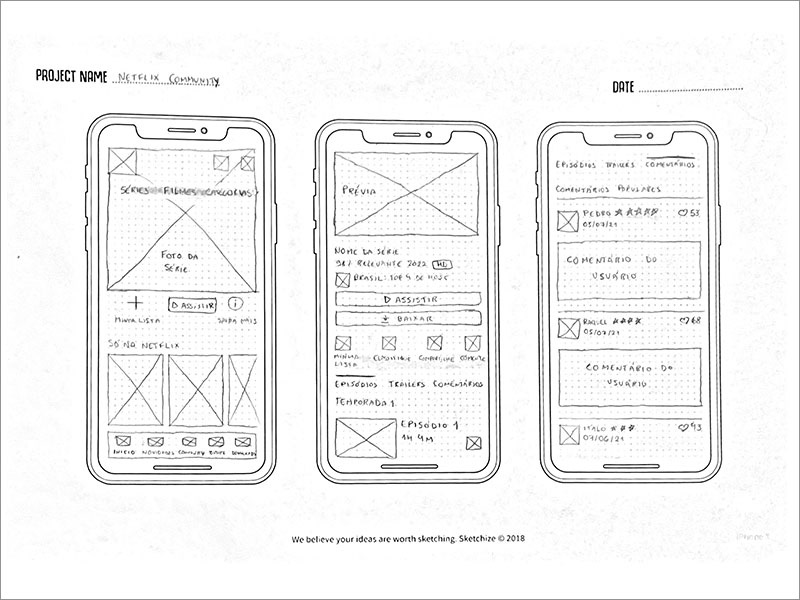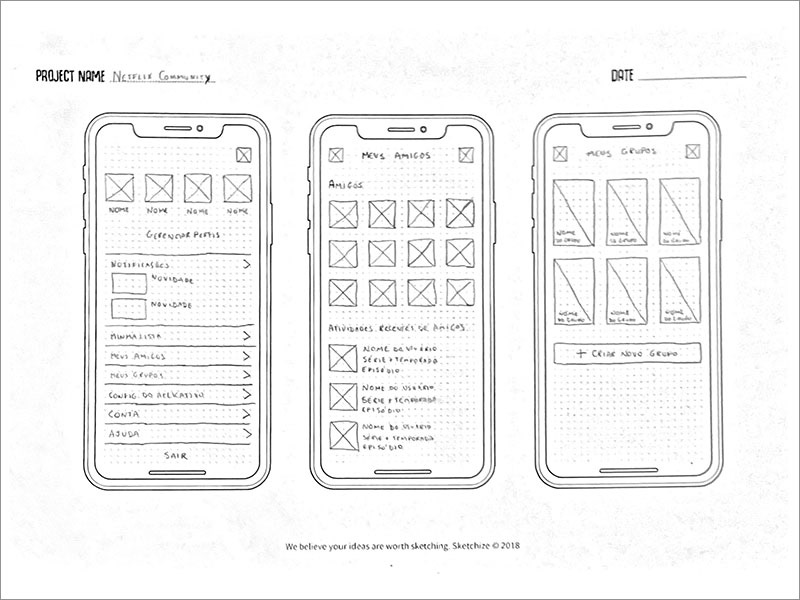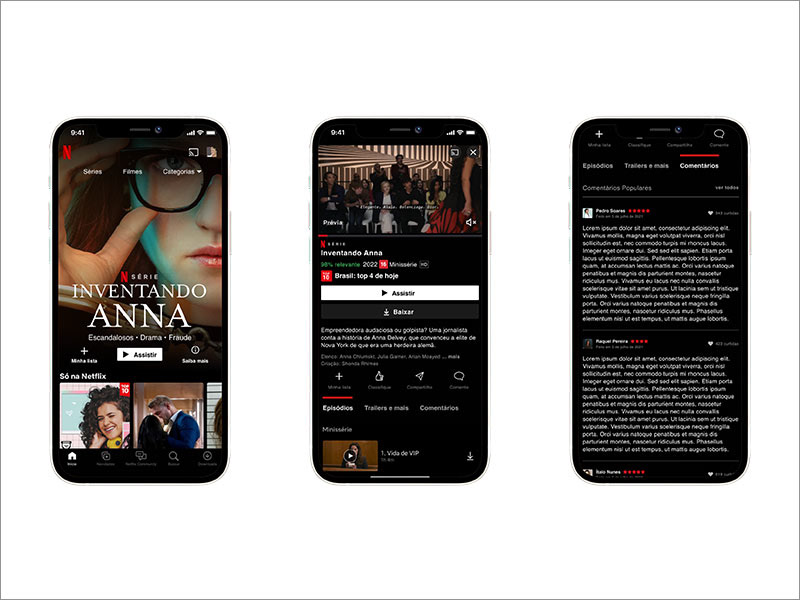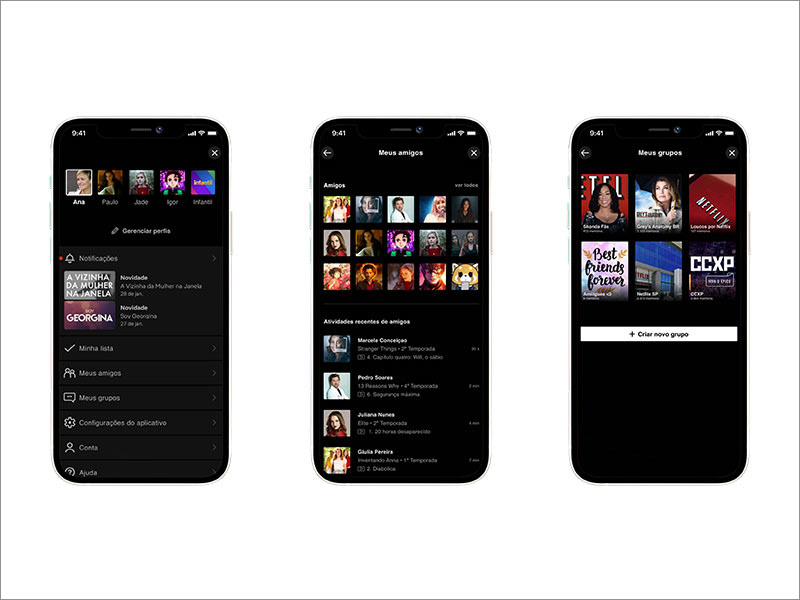Understanding the problem
Based on the premise that Netflix does not effectively explore its social features, the proposal is to develop a functionality for its app that aims to increase user engagement by fostering interaction among platform users.
Given the challenge and without a well-defined starting point, I felt the need to better understand the problem before diving into implementation. With this in mind, I chose to utilize the CSD Matrix—a widely applied framework for these early project stages—to better organize information and make connections between certain points. This allowed me to have a clearer direction on which path to follow in tackling this proposal.
CSD Matrix
In the "Certainties" column, I have included information about Netflix based on data and my own experience using the platform. Links to the data sources can be found at the end of this document.
Under "Assumptions," I have added some points that I believe to be true about the platform and its users, although I cannot be certain. These are educated guesses based on informal surveys.
Lastly, in the "Questions" column, I have listed the main aspects I would like to know about users' relationship with Netflix.
With the CSD Matrix defined, I proceeded to the next step: creating a questionnaire to be sent to platform users.
Research
Based on the previously developed CSD Matrix, I decided to create a simple online questionnaire that could confirm, invalidate, and/or address the key aspects identified in the matrix. The questionnaire was initially shared within my network, with the criterion that only Netflix users could respond.
I collected 170 responses within approximately 24 hours, of which 169 were deemed valid (one respondent was not a Netflix user). The questionnaire included a consent form and a filter question, along with 9 additional questions, of which only 1 was optional and open-ended. By analyzing the collected data, I was able to address my uncertainties and gain relevant insights that contributed to my creative process, allowing me to be more precise in proposing a solution.
The analysis of the results allowed me to make some observations, identify opportunities, and gain insights that I believe are relevant to consider before proposing a solution:
1) There is an opportunity to increase the usage of the Netflix app on mobile devices, as the majority of users primarily access the platform through their television.
2) The Netflix catalog emerged as the most attractive factor for users, making it a key element to be further explored and enhanced.
3) Some users mentioned "convenience" as the primary reason for using Netflix, indicating a lack of strong engagement with the platform. They simply use it because they are not willing to switch streaming subscriptions.
4) Only 32.5% of respondents do not find social interactions on Netflix interesting. Therefore, investing in these features would please a significant portion of users.
5) The main complaint from respondents revolves around the high price charged for the platform's service compared to cheaper alternatives offered by competitors. This is a critical point as it jeopardizes user retention and continued usage of the service.
Interviews
Not content with just the questionnaire, I felt the need to gain a more detailed understanding of the perceptions, pains, and feelings of some Netflix users when using the platform. Therefore, I randomly selected four individuals who interacted with me during the questionnaire's dissemination on my social networks and proposed to conduct a quick interview via WhatsApp. To guide my conversation with these individuals, I prepared a few questions:
1) Are you satisfied with the service provided by Netflix, or do you think it could be improved?
2) What motivates you to use Netflix?
3) Would you like to interact with other people who are watching the same content as you within the Netflix platform? Why?
4) Do you usually discuss the shows you watch on Netflix with your friends? If yes, where? (e.g., WhatsApp, Twitter, in-person meetings, Facebook groups, etc.)
The majority of interviewees expressed satisfaction with Netflix, although they had some criticisms regarding the service. Among the main concerns were the high price, the quality of productions, and the limitation on simultaneous screens. On the positive side, the interface and usability received praise. They were commended for their smoothness, ease of use, and fast navigation, both on TV, computers, and mobile devices.
The possibility of interacting with other users proved to be interesting for the interviewees. Although some had reservations about what these interactions might entail, they all believed that being able to comment and see comments from other users would be quite interesting. Furthermore, all interviewees mentioned the habit of discussing the shows they watch with friends or on social media. This highlights a strong network effect that can (and should!) be explored by Netflix.
Proto-Persona
As important as developing a solution is understanding and getting to know the target audience for whom we are designing this solution, in other words, the users. In this process, the application of the persona tool becomes crucial as it helps us make more targeted decisions for our target audience.
However, creating personas requires more detailed data about this audience, usually obtained through more advanced research commissioned by the company, and the results are typically not made public. Since I don't have access to such detailed data about Netflix's target audience, I decided to use a provisional alternative called the proto-persona. It is a simplified version of a persona applied temporarily and requires further validation.
Based on some data found on the internet and the results obtained from the questionnaire I conducted, I created the proto-persona Pedro Henrique, a 22-year-old student who loves binge-watching series and reality shows.
Storytelling
In order to better understand the purpose of the solution I want to propose and how it could fit into the users' reality, I found it interesting to develop a storytelling. For this, I used the Pixar Storytelling technique, developed by Pixar Animation Studios, to tell this story:
Once upon a time, there was Pedro Henrique, a future advertising professional from São Paulo (SP), who was passionate about the world of entertainment and dreamed of working in it.
Every day, he would watch episodes of his favorite series and reality shows, posting his analyses of each episode on his social media.
One day, while accessing the platform to watch one of his series, he discovered a new feature that allowed him to interact with other series and reality show enthusiasts just like him.
Because of that, he started using the platform daily to interact with other users, discussing their favorite shows and making new friendships.
As a result, Pedro began to gain recognition among the members, which also brought him many followers on his other social media accounts.
And finally, he was acknowledged as one of the top members of the community, which made him very happy and motivated to invest in his career as an influencer.
User Journey Map
After defining a proto-persona to better understand our target audience, I decided to create a user journey map to understand the user's touchpoints before, during, and after interacting with the specific functionality. This tool allows for an empathetic perspective, mapping the user's actions, thoughts, and feelings while identifying potential opportunities and solutions to meet their needs.
Proposed Idea
Based on the user journey map, the suggested idea here is to bring a community experience into the Netflix platform, generically named "Netflix Community."
As the name implies, it would be an environment where users can interact, create discussions, and converse with other members about their favorite shows on the platform.
The key functionalities of the Netflix Community would include creating discussion topics, commenting on topics, reacting to other comments, adding friends, and creating groups.
Additionally, the solution would incorporate gamification elements, where users can unlock badges as they engage and interact within the Netflix Community, showcasing their achievements on their user profiles.
Another exciting opportunity to maximize the solution's potential would be to provide exclusive content for community members, such as behind-the-scenes footage, making-of videos, special messages from actors, and the possibility of promotional actions.
Considering that the high price of Netflix was identified as a negative aspect by a significant number of questionnaire respondents, access to the Netflix Community would be completely free, aiming to further enhance the users' experience with the platform.
Benchmarking
Before starting the creative process of visual construction for the proposed solution, I sought out other companies that also offer this community experience to their users. The purpose of conducting benchmarking is to precisely understand how others are working on a particular solution in order to bring inspiration and ideas during the creation process. Below are some of the references I found:
Sketchframes
Before starting the prototyping process, I decided to do what we affectionately call "sketchframe" (sketches + wireframe). It simply means sketching the possible screens that I will create later, in order to facilitate the creative process and give me a preview of the solution I am proposing. As it is only a sketch, changes may occur during the creation of the high-fidelity screens.
Below you can see some of these sketches I made to assist me in creating the prototype.



Prototype
With the ideas sketched on paper and a possible preview of my solution, it's time to get to work! The goal is for the high-fidelity prototype to represent the final product more faithfully and simulate a user's navigation flow. Therefore, I relied on the existing Netflix app to create a more realistic experience by incorporating my solution within the current app.
As mentioned earlier, the proposed solution for this challenge was to create a community within the Netflix app called "Netflix Community." I prioritized specific scenarios to demonstrate how this proposal would work in practice. These scenarios include: 1) accessing Netflix Community through the bottom menu of the app; 2) accessing Netflix Community from the page of a series or movie; 3) displaying the most relevant comments and ratings about a series or movie; 4) the ability to comment on a series/movie; 5) liking a user's comment; 6) replying to a comment; 7) accessing a user's profile; 8) achievement badges for the user; 9) viewing friends and their recent activities; 10) checking groups and creating a new one.
Below you can see the high-fidelity screens:



Metrics
No proposal is fully effective unless it is validated with those for whom it is intended, namely, the users. One of the major challenges we face as designers on a daily basis is the inability to track the results of our deliveries. To overcome this, we need to make good use of metrics.
Therefore, I believe it would be beneficial to use the three success metrics because, as my colleague Rafa Brandão⁴ aptly defines them, "they are generic enough to be connected to any market segment and objective enough to provide clear information, showing the impact with each increment." These metrics would be:
1) Discovery Time: aims to shorten the user's discovery time. Here, it would be used to assess how easy it is for users to access the Netflix Community and whether simplification or highlighting of the new feature is necessary.
2) Click-through Rate: aims to measure the quantity of specific interactions. For the proposed solution, we would use it to measure how often the "comment," "reply," and "react" buttons are clicked, as well as to determine if users are adding people to their friend network (using the "add" button on profiles) or creating groups (using the "create new group" button).
3) Engagement and Retention: aims to verify if there has been an increase in both engagement and recurring usage rates. This metric is particularly interesting for this solution as the proposed challenge is to increase engagement through interactions between users within the Netflix platform.
References
¹ Netflix chega a 209 milhões de assinantes no mundo. Lucro salta 71%. TeleSíntese. Disponível em: <https://www.telesintese.com.br/netflix-chega-a-209-milhoes-de-assinantes-no-mundo-lucro-salta-71/>. Acesso em: 02 mar. 2022.
² ᵉ ³ Brasil é o 2º país que mais assiste a filmes e séries online do mundo. Folha PE. Disponível em: <https://www.folhape.com.br/cultura/brasil-e-o-2o-pais-que-mais-assiste-filmes-e-series-online-do-mundo/204873/>. Acesso em 02 mar. 2022.
⁴ Métricas de UX: O que são, onde vivem e do que se alimentam?. Design 2021. Disponível em: <https://www.design2021.com.br/artigos/metricas-de-ux-o-que-sao-onde-vivem-e-do-que-se-alimentam>. Acesso em 03 mar. 2022.